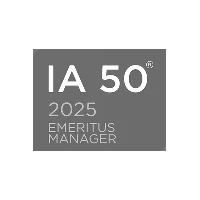American small businesses and nonprofits are facing an unprecedented economic disruption due to the COVID-19 outbreak. The Paycheck Protection Program is open again to small businesses across the country, including nonprofits. This time, lenders proximate to communities have the opportunity to lend to businesses and organizations that need the funding before it opens up to others.
In addition, a number of programs are being offered by state governments and local municipalities to assist businesses and nonprofits with whatever needs they have right now. This page will be updated continually through this economic crisis to provide you with links to programs and resources you can investigate as a way to support your operations.
Federal Programs:
Important Note:
We urge all nonprofits, cooperatives, small businesses, and sole proprietorships to immediately apply for these federal relief programs with any SBA-approved 7(a) lender when applications are accepted in January 2021.
The need is greater than the money available and will be lent on a first-come, first-served basis. It is also important to remember the agency responsible for this loan program does not usually lend to nonprofits, so they may need extra time to consider your application. Further details and links are below.
Paycheck Protection Program
The Paycheck Protection Program prioritizes millions of Americans employed by small businesses by authorizing an additional $284 billion to help small businesses remain viable.
Small businesses and eligible nonprofit organizations, Veterans organizations, and Tribal businesses described in the Small Business Act, as well as individuals who are self-employed or are independent contractors, are eligible if they also meet program size standards.
Under this program:
- First-time PPP loans are available for the lesser of $10 million or 2.5 times your average monthly payroll;
- Second-draw loans up to $2 million are available for businesses that have used funds in their Round 1 or Round 2 loan;
- 100 percent of loan could be forgiven if businesses follow guidelines.
How to Apply:
You can apply for the federal programs listed below through any existing Small Business Administration (SBA) 7(a) lender, or through any federally insured depository institution, federally insured credit union, or Farm Credit System institution that is participating. Other lenders will be available to make these loans once they are approved and enrolled in the program. A list of participating lenders as well as additional information and full terms can be found at www.sba.gov.
- A list of eligible lenders can be found using this tool.
- The application for first-time borrowers can be found here.
- Click here to learn more
- Additional resources for nonprofits
Economic Injury Disaster Loans and Loan Advance
In response to the Coronavirus (COVID-19) pandemic, small business owners in all U.S. states, Washington D.C., and territories are eligible to apply for an Economic Injury Disaster Loan advance of up to $10,000.
The SBA’s Economic Injury Disaster Loan program provides small businesses with working capital loans of up to $2 million that can provide vital economic support to small businesses to help overcome the temporary loss of revenue they are experiencing. The loan advance will provide economic relief to businesses that are currently experiencing a temporary loss of revenue. Funds will be made available within three days of a successful application, and this loan advance will not have to be repaid.
To apply for a COVID-19 Economic Injury Disaster Loan, click here.
State Programs and Local Relief Programs:
Note: We are tracking state and local relief programs on a continuous basis. This list may not be complete and we will be updating it as we become aware of new options for your consideration.
SBA Participating Lenders in PPP by State
Michigan:
- Michigan Good Food Fund (MGFF) Resources
- MGFF Peer-to-Peer Networking for Business Solutions
- City of Detroit Business Support and Resources
Washington, D.C.
California
- California Small Business COVID-19 Relief Grant Program
- California Business and Employers Resources
- Silicon Valley Community Foundation: Regional Nonprofit Emergency Fund
- JVS: Job Training, Search, and Support
New York
-
Worker’s Justice Project – Proyecto Justicia Laboral: Lista de Recursos – Respuesta ha COVID-19 (List of Cooperative Resources in Spanish)
Additional Guidance for Businesses and Employers
The Centers for Disease Control and Prevention (CDC) offers the most up-to-date information on COVID-19. This interim guidance is based on what is currently known about the coronavirus disease 2019 (COVID-19). For updates from CDC, please see the following:
- Interim Guidance for Businesses and Employers to Plan and Respond to Coronavirus Disease 2019 (COVID-19)
- Preventing Stigma Related to COVID-19
- Share Facts about COVID-19
- CDC Coronavirus Disease 2019 (COVID-19) Web page
- Information on Coronavirus Disease 2019 (COVID-19) Prevention, Symptoms and FAQ
- Treasury Department Resources
Additional Resources








